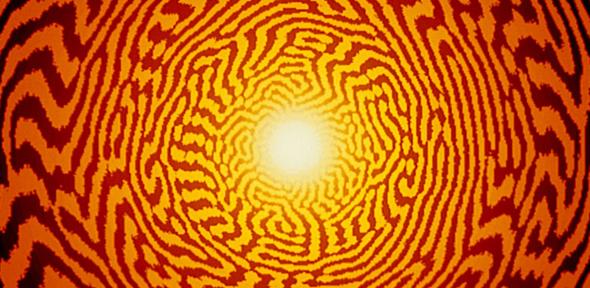
The study, led by the University of Cambridge in collaboration with Durham University, Macquarie University, and Trinity College Dublin, found that reductions in the length of the paracingulate sulcus (PCS), a fold towards the front of the brain, were associated with increased risk of hallucinations in people diagnosed with schizophrenia.
The PCS is one of the last structural folds to develop in the brain before birth, and varies in size between individuals. In a previous study, a team of researchers led by Dr Jon Simons from the Department of Psychology at the University of Cambridge, found that variation in the length of the PCS in healthy individuals was linked to the ability to distinguish real from imagined information, a process known as ‘reality monitoring’.
In this new study, published today in the journal Nature Communications, Dr Simons and his colleagues analysed 153 structural MRI scans of people diagnosed with schizophrenia and matched control participants, measuring the length of the PCS in each participant’s brain. As difficulty distinguishing self-generated information from that perceived in the outside world may be responsible for many kinds of hallucinations, the researchers wanted to assess whether there was a link between length of the PCS and propensity to hallucinate.
The researchers found that in people diagnosed with schizophrenia, a 1 cm reduction in the fold’s length increased the likelihood of hallucinations by nearly 20%. The effect was observed regardless of whether hallucinations were auditory or visual in nature, consistent with a reality monitoring explanation.
“Schizophrenia is a complex spectrum of conditions that is associated with many differences throughout the brain, so it can be difficult to make specific links between brain areas and the symptoms that are often observed,” says Dr Simons. “By comparing brain structure in a large number of people diagnosed with schizophrenia with and without the experience of hallucinations, we have been able to identify a particular brain region that seems to be associated with a key symptom of the disorder.”
The researchers believe that changes in other areas of the brain are likely also important in generating the complex phenomena of hallucinations, possibly including regions that process visual and auditory perceptual information. In people who experience hallucinations, these areas may produce altered perceptions which, due to differences in reality monitoring processes supported by regions around the PCS, may be misattributed as being real. For example, a person may vividly imagine a voice but judge that it arises from the outside world, experiencing the voice as a hallucination.
“We think that the PCS is involved in brain networks that help us recognise information that has been generated ourselves,” adds Dr Jane Garrison, first author of the study, “People with a shorter PCS seem less able to distinguish the origin of such information, and appear more likely to experience it as having been generated externally.
“Hallucinations are very complex phenomena that are a hallmark of mental illness and, in different forms, are also quite common across the general population. There is likely to be more than one explanation for why they arise, but this finding seems to help explain why some people experience things that are not actually real.”
The research was primarily supported by the University of Cambridge Behavioural and Clinical Neuroscience Institute, funded by a joint award from the UK Medical Research Council and the Wellcome Trust.
Reference
Garrison, J.R., Fernyhough, C., McCarthy-Jones, S., Haggard, M., The Australian Schizophrenia Research Bank, & Simons, J.S. (2015). Paracingulate sulcus morphology is associated with hallucinations in the human brain. Nature Communications, 6, 8956.
People diagnosed with schizophrenia who are prone to hallucinations are likely to have structural differences in a key region of the brain compared to both healthy individuals and people diagnosed with schizophrenia who do not hallucinate, according to research published today.

The text in this work is licensed under a Creative Commons Attribution 4.0 International License. For image use please see separate credits above.